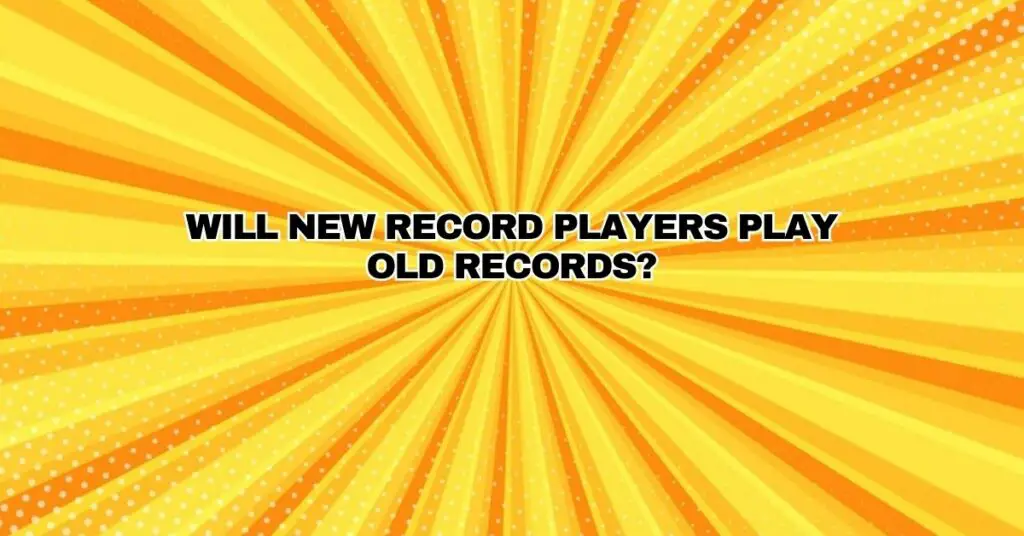The resurgence of vinyl records in the past decade has captivated music enthusiasts, collectors, and audiophiles worldwide. As a result, many individuals are exploring the world of vinyl, both with new and old records. One common question that arises is whether new record players can play old records. In this article, we will delve into the compatibility between modern turntables and vintage vinyl, exploring the factors that determine whether your new record player can spin those cherished classics from the past.
Understanding the Basics
Before we dive into compatibility, let’s establish a few fundamental concepts:
- Vinyl Records: Vinyl records are analog sound storage mediums that contain grooves with audio information. These grooves are read by a stylus (needle) on a turntable, which converts the physical movements into sound.
- Record Players and Turntables: Record players and turntables are devices designed to play vinyl records. They consist of key components, including a platter for the record, a tonearm with a cartridge and stylus, and a motor for spinning the record at the correct speed.
- Playback Speeds: Vinyl records come in different formats with distinct playback speeds. The most common speeds are 33 1/3 revolutions per minute (RPM), 45 RPM, and 78 RPM. Each of these speeds is associated with specific types of records.
Compatibility Between New and Old Records
The compatibility between new record players and old records largely depends on the record’s format and the capabilities of the turntable. Let’s explore this in detail:
- 33 1/3 RPM and 45 RPM Records: Most modern record players, including entry-level and high-end models, are designed to play records at the standard speeds of 33 1/3 RPM and 45 RPM. These speeds are suitable for the majority of vinyl records produced in the past several decades, including LPs (long-playing albums) and 7-inch singles.
- 78 RPM Records: Playing 78 RPM records is a bit more complex. While many vintage record players were specifically designed for 78 RPM records, this speed is not a standard feature on most modern turntables. However, some new turntables have adjustable playback speeds and can play 78 RPM records. If you own a collection of vintage shellac records or 78 RPM records, you should ensure your turntable can accommodate this speed or look into purchasing a turntable with this capability.
- Stylus and Cartridge: The stylus (needle) and cartridge used on a turntable can significantly impact playback. For playing old records, especially those in less-than-ideal condition, a stylus with a spherical tip is recommended as it is less likely to damage the grooves. On the other hand, for newer and well-preserved records, an elliptical or microline stylus may provide better audio quality. Some cartridges offer interchangeable styli, allowing you to adapt to the condition of your records.
- Anti-Skate and Tracking Force: Adjusting the anti-skate and tracking force settings on your turntable can also affect playback quality, particularly when dealing with old, scratched, or worn records. Experimenting with these settings can help reduce distortion and wear.
Maintaining Old Records
To ensure that your old records play well on a new record player, it’s essential to take care of your vinyl collection. Here are some tips:
- Clean Your Records: Dust and debris can affect playback quality, so regularly clean your records using a carbon-fiber brush, anti-static brush, or a record cleaning machine.
- Store Properly: Store your records vertically in a cool, dry, and dark place. Use inner sleeves to protect the record surface and outer sleeves to safeguard the covers.
- Handle Records Carefully: When handling your records, avoid touching the grooves and handle them by the edges. Never use excessive force when placing or removing records from the turntable.
Conclusion
In conclusion, the compatibility between new record players and old records largely depends on the speed of the records and the capabilities of the turntable. Most modern record players can handle the standard speeds of 33 1/3 RPM and 45 RPM, making them suitable for playing a wide range of old records, including LPs and singles. However, for 78 RPM records, you may need to invest in a turntable specifically designed for this speed or one with adjustable playback speeds.
With the right equipment, stylus, and care, you can enjoy your vintage vinyl collection on a new record player, bridging the generations and preserving the nostalgia and magic of analog sound for years to come.


